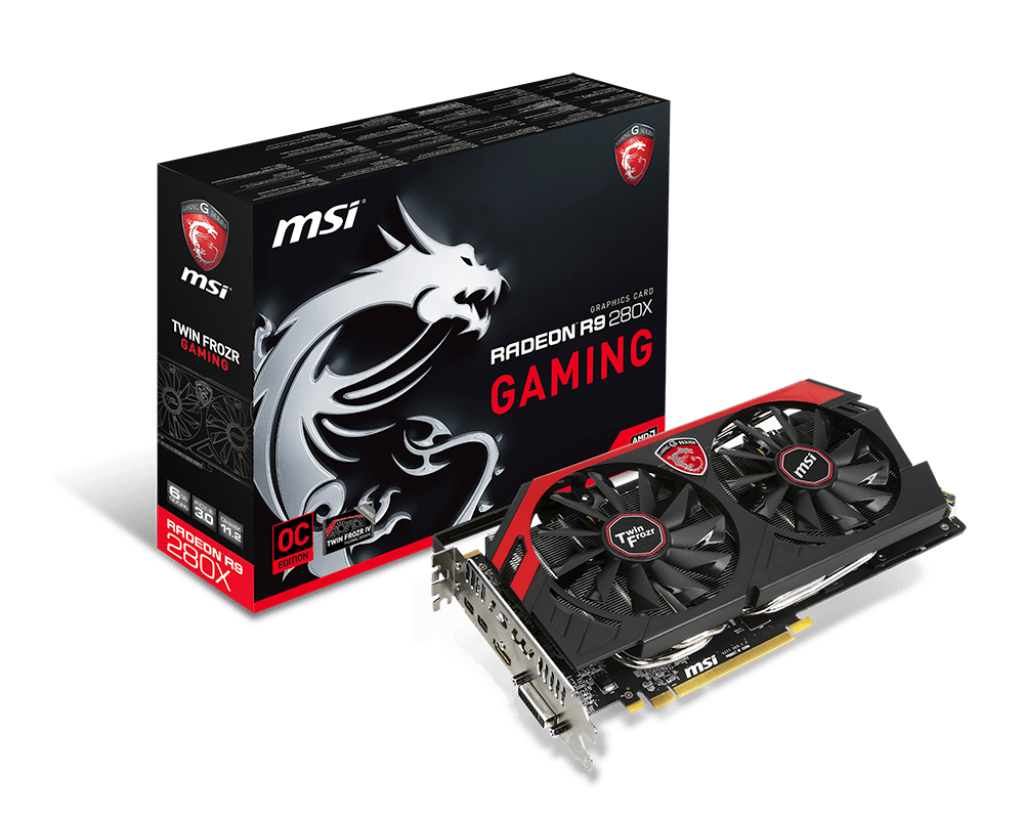Introduction
Launched in October 2013, the AMD Radeon R9 280X was part of AMD’s R9 200 series, introduced as a high-performance GPU targeted at gamers seeking top-tier performance without breaking the bank. The R9 280X was essentially a rebranded and slightly refined version of the previous-generation HD 7970 GHz Edition, based on the GCN 1.0 (Graphics Core Next) architecture.
Despite being based on older technology, the 280X came at an attractive price and offered solid performance for 1080p and 1440p gaming. It competed directly with NVIDIA’s GeForce GTX 770, often undercutting it in price while delivering similar or better performance in several titles.
The R9 280X found favor not only with gamers but also with cryptocurrency miners during the first big altcoin mining boom, particularly for its price/performance ratio and compute capability.
Specifications Overview
| Feature | Specification |
|---|---|
| GPU Architecture | GCN 1.0 (Tahiti XT) |
| Stream Processors | 2,048 |
| Texture Units | 128 |
| ROPs | 32 |
| Core Clock | 850 MHz (1,000 MHz Boost) |
| Memory | 3 GB GDDR5 |
| Memory Interface | 384-bit |
| Memory Bandwidth | 288 GB/s |
| TDP | 250W |
| Manufacturing Process | 28nm |
| Launch Price | $299 USD |
Compared to its rivals, the R9 280X held its own for a long time, offering better raw performance and compute capability than similarly priced cards.
Longevity and Modern Viability
The R9 280X enjoyed a long lifecycle thanks to:
- Robust raw performance
- Large VRAM buffer (for the time)
- Continued driver support for years
- Compatibility with modern APIs like DX12 and Vulkan
However, by 2020, the card began showing its age. Newer games demanded more than 3 GB of VRAM, and efficiency gains in newer architectures meant that even mid-range cards like the RX 580 or GTX 1060 outpaced it while using far less power.
Today, the 280X is viable only for:
- 1080p gaming on older titles
- Retro emulation rigs
- Budget builds (if acquired cheaply)
- Hobbyist collections
Legacy and Conclusion
The Radeon R9 280X holds a significant place in AMD’s GPU history. Though based on older tech, it delivered an impressive blend of price, performance, and versatility. It gave gamers access to high-performance 1080p and 1440p gaming without needing to invest in more expensive flagship cards.
Its strengths lay in:
- Powerful 384-bit memory interface
- Strong raw compute performance
- Excellent overclocking potential
- Great value at launch and in the years following
While it may not be viable for modern AAA gaming in 2025, the R9 280X helped cement AMD’s reputation as a provider of great bang-for-buck graphics cards. It remains a beloved choice among vintage PC builders, and a reminder of AMD’s resilience and competitiveness during the early 2010s.

